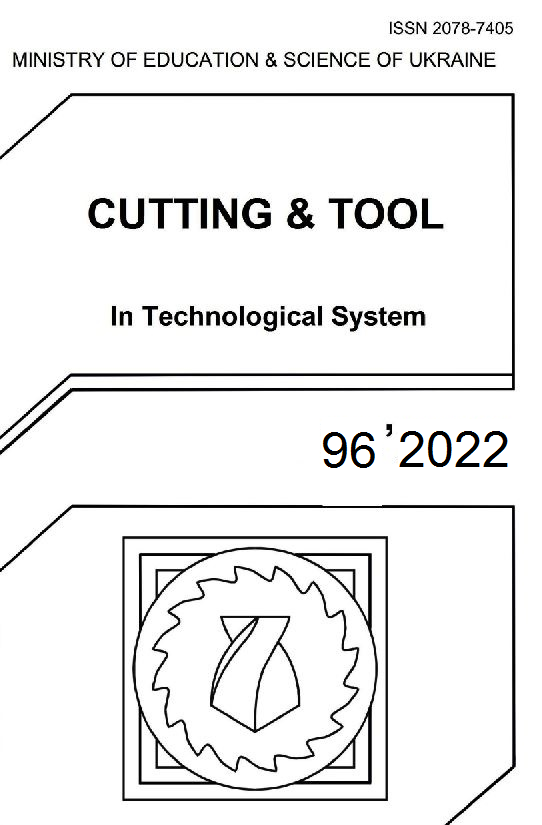ON THE SURFACE ROUGHNESS OF 3D PRINTED PARTS WITH FDM BY A LOW-BUDGET COMMERCIAL PRINTER
DOI:
https://doi.org/10.20998/2078-7405.2022.96.06Abstract
As additive manufacturing machines price is decreasing, while, at the same time, the expertise in the relevant field is rising, it is essential to test and evaluate the low-budget machines that are available for commercial use. Whilst low-budget machines are widely utilized for rapid prototyping and experimentation, they are not capable of producing parts with high surface quality and achieve high levels of repeatability due to low quality hardware and not optimized software. Having said that, the main aim of the current study is to experiment with a low budget Fused Deposition Modeling (FDM) 3D-Printer, and evaluate the surface roughness of the printed parts in respect to the angle from the print plate. Polylactic Acid (PLA) was chosen as filament material, while the printed parts surface roughness was measured according to the ISO ASTM 52902-2021 standard. The surface roughness was estimated in terms of the Ra and Rz values, while a statistical analysis was implemented in order some interesting conclusions to be deduced regarding the correlation between part orientation and surface quality.
References
A. Rashid, “Additive Manufacturing Technologies,” CIRP Encycl. Prod. Eng., pp. 1–9, 2019, doi: 10.1007/978-3-642-35950-7_16866-1.
S. Vyavahare, S. Teraiya, D. Panghal, and S. Kumar, “Fused deposition modelling: a review,” Rapid Prototyp. J., vol. 26, no. 1, pp. 176–201, 2020, doi: 10.1108/RPJ-04-2019-0106.
I. J. Solomon, P. Sevvel, and J. Gunasekaran, “A review on the various processing parameters in FDM,” Mater. Today Proc., vol. 37, no. Part 2, pp. 509–514, 2020, doi: 10.1016/j.matpr.2020.05.484.
O. S. Es-Said, J. Foyos, R. Noorani, M. Mendelson, R. Marloth, and B. A. Pregger, “Effect of layer orientation on mechanical properties of rapid prototyped samples,” Mater. Manuf. Process., vol. 15, no. 1, pp. 107–122, 2000, doi: 10.1080/10426910008912976.
K. M. Ashtankar, A. M. Kuthe, and B. S. Rathour, “IMECE2013-63146,” pp. 1–7, 2016.
L. Baich, G. Manogharan, and H. Marie, “Study of infill print design on production cost-time of 3D printed ABS parts,” Int. J. Rapid Manuf., vol. 5, no. 3/4, p. 308, 2015, doi: 10.1504/ijrapidm.2015.074809.
E. V. De Toro, J. C. Sobrino, A. M. Martínez, and V. M. Eguía, “Analysis of the influence of the variables of the fused deposition modeling (FDM) process on the mechanical properties of a carbon fiber-reinforced polyamide,” Procedia Manuf., vol. 41, pp. 731–738, 2019, doi: 10.1016/j.promfg.2019.09.064.
Z. Lin, T. Jiang, J. M. Kinsella, J. Shang, and Z. Luo, “Assessing roughness of extrusion printed soft materials using a semi-quantitative method,” Mater. Lett., vol. 303, no. July, p. 130480, 2021, doi: 10.1016/j.matlet.2021.130480.
G. S. Sandhu, K. S. Boparai, and K. S. Sandhu, “Effect of slicing parameters on surface roughness of fused deposition modeling prints,” Mater. Today Proc., no. xxxx, 2021, doi: 10.1016/j.matpr.2021.09.047.
T. Kozior and J. Bochnia, “The influence of printing orientation on surface texture parameters in powder bed fusion technology with 316L steel,” Micromachines, vol. 11, no. 7, 2020, doi: 10.3390/MI11070639.
I. Buj-Corral, A. Domínguez-Fernández, and R. Durán-Llucià, “Influence of print orientation on surface roughness in fused deposition modeling (FDM) processes,” Materials (Basel)., vol. 12, no. 23, 2019, doi: 10.3390/ma122333834.
M. S. Alsoufi, A. El-Sayed, and A. E. Elsayed, “How Surface Roughness Performance of Printed Parts Manufactured by Desktop FDM 3D Printer with PLA+ is Influenced by Measuring Direction,” Am. J. Mech. Eng., vol. 5, no. 5, pp. 211–222, 2017, doi: 10.12691/ajme-5-5-4.
Whitehouse, David (2012). Surfaces and their Measurement. Boston: Butterworth-Heinemann. ISBN 978-0080972015. 14. Everitt, Brian (1998). The Cambridge Dictionary of Statistics. Cambridge, UK New York: Cambridge University Press. ISBN 978-0521593465.
Downloads
Published
Issue
Section
License
Copyright Notice
Authors who publish with this Collection agree to the following terms:
1. Authors retain copyright and grant the Collection right of first publication with the work simultaneously licensed under a Creative Commons Attribution License that allows others to share the work with an acknowledgement of the work's authorship and initial publication in this Collection.
2. Authors are able to enter into separate, additional contractual arrangements for the non-exclusive distribution of the Collection's published version of the work (e.g., post it to an institutional repository or publish it in a book), with an acknowledgement of its initial publication in this Collection.
3. Authors are permitted and encouraged to post their work online (e.g., in institutional repositories or on their website) prior to and during the submission process, as it can lead to productive exchanges, as well as earlier and greater citation of published work.

